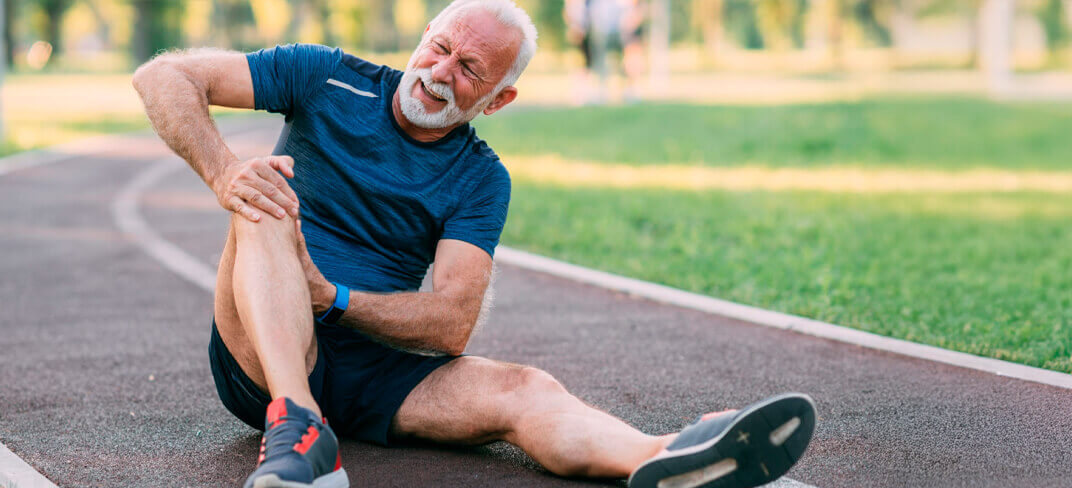How to Manage Pain from Old Sports Injuries

If you’ve been playing sports for many years, it’s likely you’ve experienced some injuries along the way. These injuries can continue to cause discomfort even long after they’ve occurred. Chronic pain from old sports injuries is a common issue among older adults, whether or not you’re still active in sports. This pain can impact daily life, making it difficult to stay active or perform routine tasks. However, it is possible to treat and manage this pain. Learn how to deal with persistent pain caused by old injuries and improve your quality of life.
What Causes Chronic Pain from Old Sports Injuries?
Chronic pain can have many causes, and in the case of sports injuries, acute traumas such as fractures, sprains, or strains can result in long-term pain even years later. This pain may appear in the muscles or joints at the site of the original injury or in surrounding areas.
Chronic pain often develops when an acute injury is not properly treated at the time it occurs. Additionally, overuse injuries such as bursitis, tendinitis, or stress fractures can lead to persistent pain—especially if they are not given enough time to heal properly.
Chronic pain can also develop even if the initial injury was treated or after a surgical intervention.
Even following initial treatment or surgery, chronic pain may still arise, making it important to closely monitor the recovery phase.
Managing Chronic Pain from Old Injuries
Persistent muscle and joint pain can make it hard to enjoy your favourite sport—or even carry out everyday tasks. However, with the right strategies, it can be effectively managed. Here are a few helpful tips:
Movement
When suffering from chronic pain, your first reaction might be to stop moving entirely—but that can make things worse.
Rest and recovery are essential, but completely stopping movement won’t help your joints. Specialists recommend lowering exercise intensity and focusing on movements that strengthen and stretch the muscles around the affected area. This kind of movement can actually help lubricate the joint.
An exception applies to injuries such as dislocations or fractures, which limit movement.
Always consult a specialist or athletic trainer for personalised advice on the most appropriate exercises.
Rest
You shouldn’t stop moving entirely, but it’s also important not to overdo physical activity when living with chronic pain, as that could make things worse. Finding the right balance between rest and movement can be challenging, but it’s essential.
The RICE method (Rest, Ice, Compression, Elevation) is particularly useful in managing pain associated with many chronic injuries.
Medication
Medications such as non-steroidal anti-inflammatory drugs (NSAIDs)—like aspirin, ibuprofen, and naproxen—can help manage chronic pain, and many are available over the counter.
In cases of severe chronic pain, it’s important to consult a specialist, as a prescription pain reliever may be necessary.
Healthy Habits
Maintaining a healthy lifestyle—through a balanced diet, proper sleep, and appropriate exercise—is essential for taking care of your body and preventing chronic pain from getting worse.
Don’t Neglect Mental Health
Chronic pain doesn’t only affect the body—it can take a toll on mental health as well. Many people experience anxiety or depression due to ongoing physical pain. For older athletes in particular, the psychological impact can be significant, as an injury doesn’t just mean the inability to play sports—it may also feel like the loss of an important part of one’s lifestyle.
Surgery
In the most severe cases of chronic pain, when other treatments are ineffective, surgery may be necessary to repair the damage and improve quality of life.
When to See a Doctor for Chronic Pain
It’s recommended to consult a specialist, especially if:
- The pain does not improve or worsens despite rest and medication.
- The pain interferes with daily activities, such as climbing stairs, reaching for items in a cupboard, playing with grandchildren or pets, etc.
Learn more about the Orthopaedics and Physiotherapy services at UPMC Salvator Mundi International Hospital.